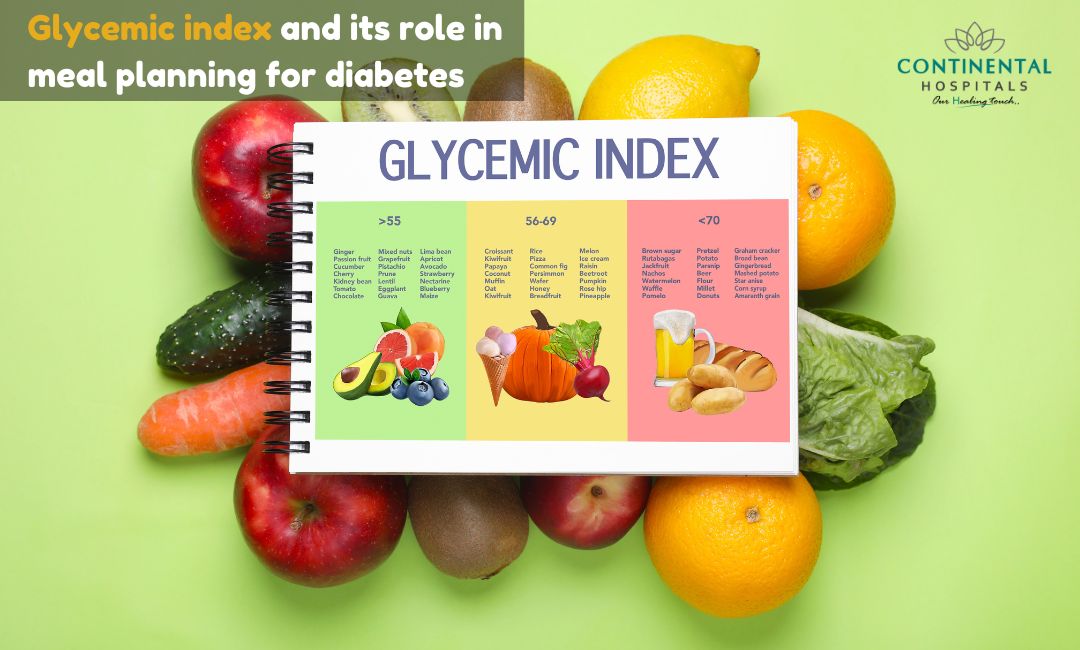Managing diabetes involves more than just monitoring blood sugar levels and taking medication; it requires a comprehensive approach to diet and nutrition. One essential tool in this dietary management is the Glycemic Index (GI). Understanding the Glycemic Index and how to use it in meal planning can significantly help individuals with diabetes maintain stable blood sugar levels and lead a healthier life.
What is the Glycemic Index?
The Glycemic Index is a ranking system that measures how quickly carbohydrates in foods raise blood sugar levels after eating. Foods are scored on a scale from 0 to 100, with pure glucose assigned a value of 100. Here's a breakdown of the GI scale:
- Low GI: 55 or less
- Medium GI: 56-69
- High GI: 70 or more
Foods with a low GI are digested and absorbed more slowly, leading to a gradual rise in blood sugar levels. Conversely, high GI foods cause a rapid spike in blood sugar.
Why is the Glycemic Index Important for Diabetes?
For individuals with diabetes, managing blood sugar levels is crucial to avoid complications such as heart disease, nerve damage, and kidney problems. The Glycemic Index helps in this management by providing a guide to choosing foods that have a more predictable and stable impact on blood sugar. Here are some benefits of using the GI for meal planning:
🥗 Healthy Plate Challenge
🍽 Add Your Favorite Dish
Pick Your 6 favorite foods, eat, and see the results.Drag & drop foods onto your plate.
Drop Food Here
Better Blood Sugar Control: Low GI foods help maintain a steady blood sugar level, reducing the risk of spikes and crashes.
Improved Satiety: Foods with a low GI tend to keep you fuller for longer, aiding in weight management and reducing the likelihood of overeating.
Enhanced Energy Levels: Stable blood sugar levels can help maintain consistent energy levels throughout the day.
Reduced Risk of Complications: By preventing large fluctuations in blood sugar, the GI can help reduce the risk of diabetes-related complications.
How to Incorporate the Glycemic Index into Your Meal Planning
Using the Glycemic Index for meal planning involves making informed choices about the types of carbohydrates you consume. Here are some practical tips:
Choose Low GI Foods: Incorporate more low GI foods into your diet. Examples include whole grains, legumes, vegetables, most fruits, and dairy products.
Balance Your Meals: Combine low GI foods with those that have a higher GI to balance the overall effect on your blood sugar. For instance, if you eat a high GI food like white rice, pair it with low GI vegetables and a protein source.
Portion Control: Even low GI foods can affect blood sugar if eaten in large quantities. Pay attention to portion sizes to keep your blood sugar levels in check.
Healthy Snacking: Opt for low GI snacks such as nuts, yogurt, or fruit instead of high GI snacks like chips or sugary treats.
Cooking Methods Matter: The way you prepare food can influence its GI. For example, al dente pasta has a lower GI than soft-cooked pasta. Similarly, whole fruits have a lower GI compared to fruit juices.
Examples of Low, Medium, and High GI Foods
Low GI Foods (55 or less):
- Lentils
- Chickpeas
- Apples
- Oranges
- Whole grain bread
- Rolled oats
- Sweet potatoes
Medium GI Foods (56-69):
- Brown rice
- Pineapple
- Bananas
- Basmati rice
- Couscous
High GI Foods (70 or more):
- White bread
- Corn flakes
- Instant oatmeal
- White rice
- Potatoes
Meal Planning Tips Using the Glycemic Index
Breakfast: Start your day with a low GI breakfast. Choose whole grain cereals, oatmeal, or whole wheat toast. Pair these with protein sources such as eggs or yogurt to keep your blood sugar levels steady.
Lunch: For lunch, opt for a salad with plenty of vegetables, a source of lean protein like chicken or tofu, and a whole grain such as quinoa or brown rice. Add a low GI fruit for dessert, like an apple or an orange.
Dinner: A balanced dinner might include grilled fish, a variety of vegetables, and a serving of sweet potatoes or legumes. This combination ensures a low GI meal that is both nutritious and satisfying.
Snacks: For snacks, choose options like a handful of nuts, a piece of fruit, or carrot sticks with hummus. These choices are not only low GI but also provide essential nutrients.
The Role of Continental Hospitals in Diabetes Management
Continental Hospitals in Hyderabad is renowned for its comprehensive approach to diabetes care. They offer a range of services tailored to the needs of individuals with diabetes, including:
Personalized Meal Planning: Dietitians and nutritionists at Continental Hospitals help patients create meal plans based on the Glycemic Index, ensuring that dietary choices support stable blood sugar levels.
Regular Monitoring: The hospital provides regular blood sugar monitoring to track progress and make necessary adjustments to the treatment plan.
Education and Support: Patients receive education on how to manage diabetes effectively, including understanding the Glycemic Index and its application in daily life.
Advanced Treatments: Continental Hospitals offers advanced treatments for diabetes, including medication management, insulin therapy, and cutting-edge technologies for monitoring and control.
Multidisciplinary Approach: The hospital's team of endocrinologists, diabetologists, and dietitians work together to provide holistic care that addresses all aspects of diabetes management.
Conclusion
The Glycemic Index is a valuable tool in the management of diabetes, helping individuals make informed dietary choices that promote stable blood sugar levels. By incorporating low GI foods into your meal planning, you can achieve better blood sugar control, enhanced energy levels, and reduced risk of complications. Continental Hospitals in Hyderabad stands out as a leader in diabetes care, offering personalized and comprehensive treatment options to support your journey towards better health.
Consult our best General Physician at Continental Hospitals for tailored treatment plans and professional guidance.
Related Blogs:
.webp)














